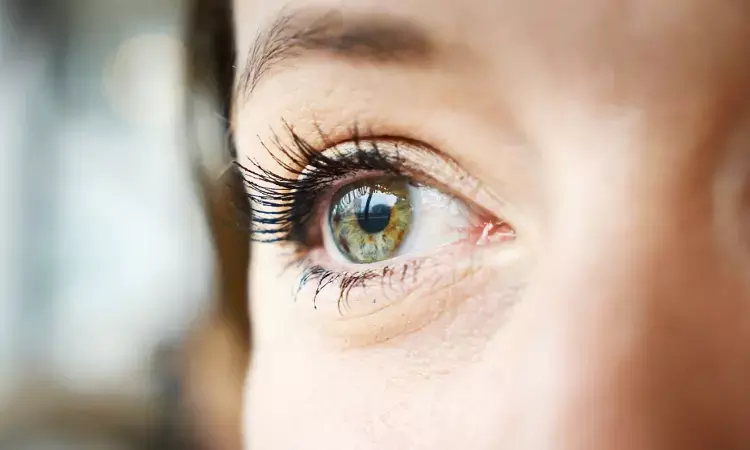- Home
- Medical news & Guidelines
- Anesthesiology
- Cardiology and CTVS
- Critical Care
- Dentistry
- Dermatology
- Diabetes and Endocrinology
- ENT
- Gastroenterology
- Medicine
- Nephrology
- Neurology
- Obstretics-Gynaecology
- Oncology
- Ophthalmology
- Orthopaedics
- Pediatrics-Neonatology
- Psychiatry
- Pulmonology
- Radiology
- Surgery
- Urology
- Laboratory Medicine
- Diet
- Nursing
- Paramedical
- Physiotherapy
- Health news
- Fact Check
- Bone Health Fact Check
- Brain Health Fact Check
- Cancer Related Fact Check
- Child Care Fact Check
- Dental and oral health fact check
- Diabetes and metabolic health fact check
- Diet and Nutrition Fact Check
- Eye and ENT Care Fact Check
- Fitness fact check
- Gut health fact check
- Heart health fact check
- Kidney health fact check
- Medical education fact check
- Men's health fact check
- Respiratory fact check
- Skin and hair care fact check
- Vaccine and Immunization fact check
- Women's health fact check
- AYUSH
- State News
- Andaman and Nicobar Islands
- Andhra Pradesh
- Arunachal Pradesh
- Assam
- Bihar
- Chandigarh
- Chattisgarh
- Dadra and Nagar Haveli
- Daman and Diu
- Delhi
- Goa
- Gujarat
- Haryana
- Himachal Pradesh
- Jammu & Kashmir
- Jharkhand
- Karnataka
- Kerala
- Ladakh
- Lakshadweep
- Madhya Pradesh
- Maharashtra
- Manipur
- Meghalaya
- Mizoram
- Nagaland
- Odisha
- Puducherry
- Punjab
- Rajasthan
- Sikkim
- Tamil Nadu
- Telangana
- Tripura
- Uttar Pradesh
- Uttrakhand
- West Bengal
- Medical Education
- Industry
Nasolacrimal duct intubation with Crawford tubes reduces severity of epiphora

Canada: In a new study conducted by Karan Gandhi and team it was found that for the treatment of epiphora, nasolacrimal duct intubation with Crawford tubes done under direct endoscopic vision is routinely effective. The findings of this study were published in the Canadian Journal of Ophthalmology.
In pediatrics, silicone nasolacrimal stents are routinely used to treat epiphora. The most typical treatment length is three months, however, tubes are sometimes withdrawn mistakenly early and are still effective. There is no agreement on how long tubes should be left in place and what factors determine therapeutic effectiveness.
Over a 10-year period (2009–2019), a retrospective chart evaluation of patients who had Crawford tube implantation was performed for this study. Crawford tubes were implanted in patients above the age of 18 in collaboration with an otolaryngologist who conducted nasal endoscopy for direct visibility while recovering Crawford tubes and in fracture of the inferior turbinate. In all cases, bicanalicular intubation was tried; where this was not possible, monocanalicular intubation was performed.
The results of this study stated as follow;
1. In this study, 42 patients were enrolled, representing 50 eyes.
2. 54% of the eyes experienced spontaneous tube extrusion.
3. The tubes were left in place for an average of 17.1 weeks (0–113 weeks).
4. 86% of patients had their symptoms addressed, which is comparable to operations without endoscopy.
5. There were no difficulties throughout the procedure.
6. There was no link found between the frequency of persistent symptoms and the length of therapy.
In conclusion, although epiphora can resolve on its own, severe symptoms that last longer than a year after delivery require medical attention. Children who get Crawford tubes for epiphora frequently have spontaneous tube extrusion before the course of therapy is completed. However, the amount of time the tubes remained in place had no effect on treatment success. Intraoperative problems can be avoided using endoscopic visualization.
Reference:
Gandhi K, Dzioba A, Husein M, Makar I, Sharan S. Effectiveness of pediatric Crawford tube implants when endoscopically assisted by ENT surgeons. Can J Ophthalmol. Published online January 14, 2022. doi:10.1016/j.jcjo.2021.12.004
Keywords: epiphora, nasolacrimal duct intubation, tears, endoscopic surgery, otolaryngologist, Crawford tubes, Canadian Journal of Ophthalmology, implant, pediatric, tube implant
Medical Dialogues consists of a team of passionate medical/scientific writers, led by doctors and healthcare researchers. Our team efforts to bring you updated and timely news about the important happenings of the medical and healthcare sector. Our editorial team can be reached at editorial@medicaldialogues.in.
Dr Kamal Kant Kohli-MBBS, DTCD- a chest specialist with more than 30 years of practice and a flair for writing clinical articles, Dr Kamal Kant Kohli joined Medical Dialogues as a Chief Editor of Medical News. Besides writing articles, as an editor, he proofreads and verifies all the medical content published on Medical Dialogues including those coming from journals, studies,medical conferences,guidelines etc. Email: drkohli@medicaldialogues.in. Contact no. 011-43720751


